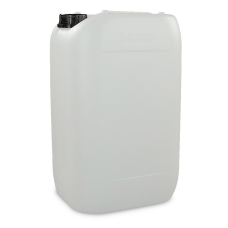Formic acid
Formic acid is used as – Solvent in chemical reactions | Textile dye | Means for combating mites in bees | Silage and hay preservation agent | Antiseptic | Disinfection of laboratory equipment
Buy Formic Acid from ChemLV at a bargain price in Latvia and the European Union
Formic acid is used as – Solvent in chemical reactions | Textile dye | Means for combating mites in bees | Silage and hay preservation agent | Antiseptic | Disinfection of laboratory equipment
Areas of use – Chemical industry | Textile industry | Beekeeping | Agriculture | Medicine | Pharmaceutical industry
Description Formic Acid
Formic acid is a colorless, highly corrosive liquid with a pungent odor.
Attacks metals and fabrics. Miscible with ether, acetone, ethyl acetate, methanol, ethanol. Partially soluble in benzene, toluene, xylenes. It dissolves approximately 10% in benzene, toluene and xylenes. Less soluble in aliphatic hydrocarbons. Methanoic acid decomposes on heating and on contact with strong acids (sulfuric acid) to form carbon monoxide. When heated to decomposition, emits acrid smoke and irritating fumes. Causes corrosion of metals.
Formic acid is transported by rail and road.
Storage only in warehouses intended for storage. Stable under proper storage conditions.
Formic acid is used in the leather industry, in the process of dyeing and finishing textiles.
As a solvent for the production of adhesives and polymers.
Methanoic acid is also used as a coagulant in rubber manufacturing processes.
We always have a large selection of chemical products, including acids, in stock.
The range includes:
– Nitric acid;
– Boric acid;
– Citric acid;
– Formic acid;
– Phosphoric acid 75%;
– Phosphoric acid 85%;
– Sulfuric acid 50%;
– Sulfuric acid, technical;
– Hydrochloric acid 33%;
– Acetic acid 70%;
– Acetic acid 80%;
– Acetic acid 99.9%;
– Oxalic acid.
Security
Signal word – Danger
Stickers (Pictogram) – GHS02, GHS06, GHS05
![]()
![]()
![]()
Hazard statements –
H226 – Flammable liquid and vapour
H302 – Harmful if swallowed
H314 – Causes severe skin burns and eye damage.
H331 – Toxic by inhalation
EUH071 – Corrosive to the respiratory tract
Precautionary statements –
P210 – Keep away from heat, hot surfaces, sparks, open flames and other sources of ignition. No smoking
P280 – Wear protective gloves/protective clothing/eye/face protection
P301 + P330 + P331 – IF SWALLOWED: rinse mouth. DO NOT induce vomiting
P303 + P361 + P353 – IF ON SKIN (or hair): Take off immediately all contaminated clothing. Rinse skin with water or shower
P305 + P351 + P338 – IF IN EYES: Rinse cautiously with water for several minutes. Remove contact lenses if you have them and this is easy to do. Continue rinsing
P310 – Immediately call a POISON CENTER or doctor/physician
UN number – UN 1779
Hazard Class – 8
Packing Group – II
| Weight | 1.2 kg |
|---|---|
| Product type | Liquid |
| Package (acids) | Barrel 200 l, Eurocube 200 l |
| Formula | CH2O2 |
| Cas | 64-18-6 |
| EC | 200-579-1 |
| UN | UN 1779 |
| Hazard class | 8 |
| Packaging group | II |
| Stickers (icon) | GHS02, GHS06, GHS05 |
| Signal word | Danger |
| Color | Colorless |







